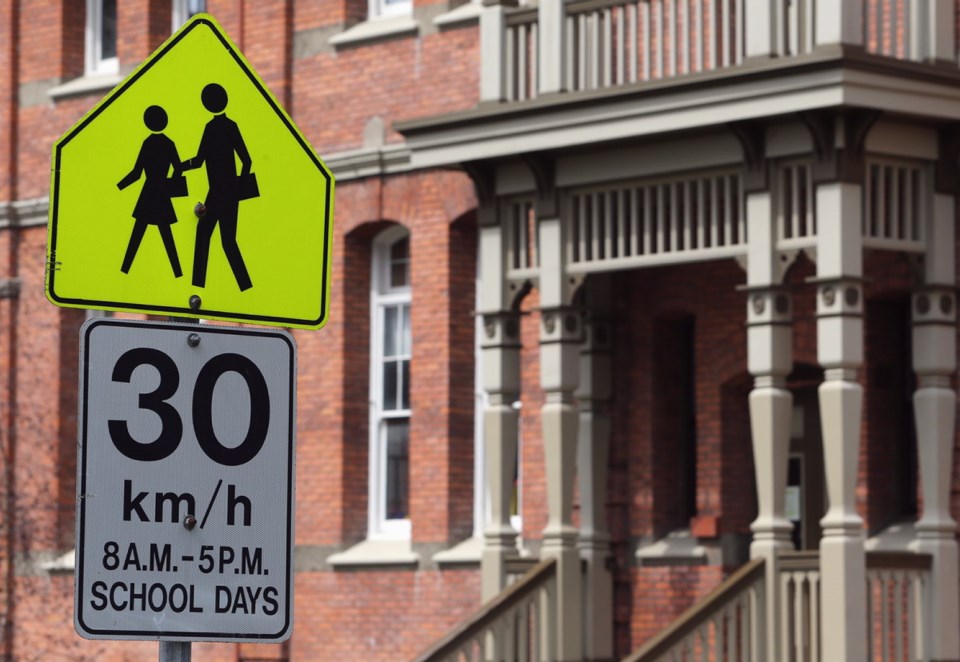As children and their families prepare for schools reopening, everyone has questions. Parents are concerned for their children’s safety, and about the possibility they may bring the COVID-19 virus home with them.
Teachers and support staff are unclear what degree of risk they face.
On the other side of the dilemma, child psychologists are fearful that if schools do not reopen, prolonged social isolation will have damaging effects on kids.
How do we balance these conflicting feelings of unease?
Let’s start with what we do know. Children and teenagers are generally not at heightened risk from this virus. No-one under age 19 has died of COVID in B.C., and none have been admitted to an ICU.
There are some circumstances that call for precautions. For example, children undergoing chemotherapy for cancer often have compromised immune systems. Medical guidance might be needed in such cases.
What about the danger that kids may bring the virus home from school? While most parents are at limited risk of serious complications, this concern is not as clearcut.
No-one aged 20 to 39 has died of COVID in B.C., and only 17 have been admitted to an ICU over an eight-month period.
In the age group 40 to 59, seven people have died, and 52 have been admitted to an ICU.
What we can say then, is that within the age groups representing most parents, there have been seven deaths and 69 ICU admissions.
On the one hand, that is seven deaths too many. At the same time, since there are 2.8 million people in this cohort, the individual risk factor isn’t high.
After that, however, the numbers begin to climb. In the 60 to 79 age group, 53 people have died while 103 have been admitted to an ICU.
Among those 80 years or older,, 136 people have died, though only 21 were admitted to an ICU. Many of this group were residents of long-term care facilities.
This is where the concern about kids bringing the virus back from school needs special attention. If there are elderly family members — grandparents perhaps — sharing the family home or regularly visiting, special precautions may be needed.
These could include social distancing, the wearing of masks at home, even separate mealtimes.
The challenges facing teachers are similar, but more pronounced. Necessarily, they will be interacting with large numbers of kids.
The Education Ministry has announced a policy to limit this risk. In elementary and middle schools, pupils will be organized into learning groups of no greater than 60. High school learning groups have a maximum of 120.
The idea is to reduce the amount of teacher/student contact. Previously, kids would intermix widely from class to class. That exposed staff to large numbers of pupils.
Now teachers will work only with the same designated group of students throughout the school year.
In addition, both kids and teachers will have to wear masks in common areas, like hallways and buses. And anyone with even mild symptoms will be told to stay at home.
How these policies evolve remains to be seen. It’s not unlikely, as experience grows with this new regime, that changes may be made.
What about the other side of the issue — that children need social interaction in their formative years? There are actually two concerns here.
First, there is general agreement among child psychologists that long periods of social isolation hamper teenage development. Indeed some experts fear that harm suffered during this period may last well into the adult years.
There is also the reality that the COVID epidemic may be a recurring disease, like flu or the common cold. We cannot keep youngsters indefinitely isolated.
The second concern revolves around the effectiveness of distance education as an alternative to attending school.
Researchers in the U.S. have found that while kids from affluent families do reasonably well, children from poorer backgrounds lag behind. Some American schools in low income districts report that as many as half of their students never log on to virtual teaching sessions.
The best conclusion we can draw is that more information is needed, in particular regarding degrees of risk in foreseeable circumstances. If people are being needlessly alarmed, those fears should be allayed.
On the other hand if their concerns are real, we need to know what specific steps should be taken, and how additional measures can be implemented if risks increase.
The beginning of a new school year has always been a time of anticipation and excitement — until now. Sadly, the prevailing feeling at present is one of fear and uncertainty.
Our public health authorities, Dr. Bonnie Henry in particular, have done a first rate job helping us avoid this virus.
Now we need their help in learning how to live with it.



